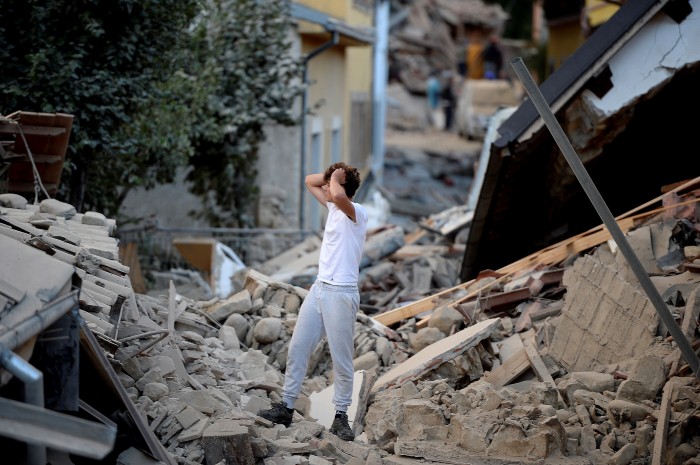Italy’s Deadly Earthquake Highlights Its Huge Problem With Infrastructure

Let’s get one thing out of the way: the magnitude 6.2 earthquake that struck north of Amatrice, Italy, in the small hours of Wednesday morning wasn’t very powerful. Much more powerful earthquakes have occurred several times in the last few years in places like Japan and South America, with less dramatic results.
That’s not to discount the tragedy of the quake, which has killed at least 120 people at the time of writing. If anything, it exacerbates it. Italy is a developed country; it has a long history of earthquakes and a nationwide seismic monitoring network. It shouldn’t be suffering so badly from quakes that it knows are coming (if not precisely when). And yet this is the fourth temblor to cause devastation in Italy in the last decade. One, a magnitude 6.3 quake that struck L’Aquila in 2009, flattened most of the town and killed 300 people. The country responded in part by blaming scientists.
The real culprit is poor commitment to building hardened infrastructure. A large portion of the country’s buildings date to the decades after World War II, when the population was booming, but construction codes didn’t yet account for seismic hazards. While laws were updated in the 1970s, many of them have been ignored, even for hospitals and schools. Recently constructed buildings often fail disproportionately when the ground starts shaking. A report in the Washington Post from nearby the epicenter of Wednesday’s quake typifies the pattern of damage:
Journalist Sabrina Fantauzzi was in Illica, a village 88 miles northeast of Rome, when the earthquake struck. "When I woke up during the night from the shock, I saw a big crack in the wall, I made it just in time to take the kids, taking the stairs and leave," she told ANSA. "The oldest houses, those of 1700, are damaged ... but those made in the ’70s are pulverized. The only buildings that held up were those built after the ’80s, according to earthquake-resistant criteria."
When an earthquake hits, reactions often focus on the randomness, the human tragedy, and the inability to prevent it. Sometimes high-tech measures are mentioned, and early detection networks have been shown to give people precious seconds to get to safety before seismic waves strike.
But improving building standards (and following them) is a much more potent recipe for saving lives. Italy is far from alone in having room to improve on this front, and many developing nations are far worse off. The country may be unique, though, in that it has the resources, know-how, and even the laws needed to build structures that minimize loss of life. Yet somehow each time disaster strikes, the story seems to be largely the same.
(Read more: Washington Post, New York Times, Christian Science Monitor, Science, “How International Monitors Spot Nukes and Other Rumblings,” “80 Seconds of Warning for Tokyo”)
Keep Reading
Most Popular
Large language models can do jaw-dropping things. But nobody knows exactly why.
And that's a problem. Figuring it out is one of the biggest scientific puzzles of our time and a crucial step towards controlling more powerful future models.
The problem with plug-in hybrids? Their drivers.
Plug-in hybrids are often sold as a transition to EVs, but new data from Europe shows we’re still underestimating the emissions they produce.
Google DeepMind’s new generative model makes Super Mario–like games from scratch
Genie learns how to control games by watching hours and hours of video. It could help train next-gen robots too.
How scientists traced a mysterious covid case back to six toilets
When wastewater surveillance turns into a hunt for a single infected individual, the ethics get tricky.
Stay connected
Get the latest updates from
MIT Technology Review
Discover special offers, top stories, upcoming events, and more.